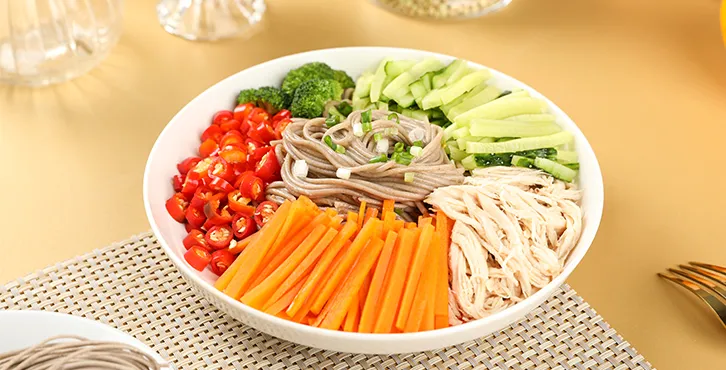Healthy Noodle Options for Diabetics to Enjoy Guilt-Free Meals
Noodles for Diabetics A Healthy Perspective on Enjoying a Beloved Dish
When it comes to managing diabetes, dietary choices play a crucial role in maintaining stable blood glucose levels. For many, the word noodles can evoke feelings of comfort and nostalgia, but the question often arises can diabetics enjoy noodles without compromising their health? The answer lies in understanding the types of noodles available and how to incorporate them into a balanced diet.
Understanding Carbohydrates and Blood Sugar
Firstly, it is important to recognize that all noodles contain carbohydrates, which can affect blood sugar levels. However, not all carbohydrates are created equal. The glycemic index (GI) is a scale that ranks foods based on their effect on blood sugar levels. High-GI foods can cause rapid spikes in blood sugar, whereas low-GI foods lead to more gradual increases.
Choosing the Right Noodles
For diabetics, selecting the right type of noodles is key. Here are some healthier alternatives that are lower in carbohydrates and have a lower GI
1. Whole Grain Noodles Whole grain pasta is made from whole wheat flour and contains more fiber and nutrients compared to its refined counterparts. The added fiber not only helps to slow down the digestion of carbohydrates but also promotes satiety.
2. Vegetable Noodles Noodles made from vegetables like zucchini, carrot, or sweet potato can be a fantastic alternative. Spiralized vegetable noodles, often referred to as zoodles, provide the texture of traditional noodles while significantly reducing carbohydrate content.
3. Legume-based Noodles Noodles made from lentils, chickpeas, or black beans are high in protein and fiber, making them a great option for diabetics. These noodles tend to have a lower GI and can help in controlling blood sugar levels.
4. Shirataki Noodles Made from the konjac yam, shirataki noodles are extremely low in calories and carbohydrates. They are a popular choice for those looking to reduce their carbohydrate intake without sacrificing the comfort of noodles.
noodles for diabetics

Portion Control and Meal Composition
Even when choosing lower-carb options, portion control is essential. A good practice is to fill half of your plate with non-starchy vegetables (like leafy greens and bell peppers), a quarter with lean protein (chicken, tofu, or fish), and a quarter with your chosen noodle type. This balanced meal approach can help mitigate blood sugar spikes while providing essential nutrients.
Flavorful Additions
When preparing noodles, flavor and nutrition can be enhanced with a variety of healthy ingredients
- Lean Proteins Incorporating lean proteins not only helps regulate blood sugar levels but also keeps you feeling full. Options like grilled chicken, shrimp, or beans can be excellent additions.
- Healthy Fats Including sources of healthy fats, such as olive oil, nuts, or avocado, can also aid in satiety and improve heart health, which is particularly important for diabetics.
- Herbs and Spices Using fresh herbs and spices can enhance the flavor of your noodle dishes without adding extra calories or carbs. Garlic, basil, ginger, and turmeric not only boost flavor but can also offer health benefits.
Conclusion
In conclusion, while traditional noodles might pose a challenge for diabetics due to their carbohydrate content and potential impact on blood sugar, there are numerous alternatives and strategies to enjoy this beloved dish in a healthier way. By making informed choices about noodle types, incorporating a variety of nutrient-dense ingredients, and practicing portion control, diabetics can savor delicious noodle dishes while effectively managing their condition. As with any dietary change, it’s wise to consult with a healthcare professional or a registered dietitian to tailor choices to individual health needs. With the right approach, noodles can indeed be a part of a balanced diet for diabetics – allowing for enjoyment without compromising health.
-
Unleash Your Inner Chef with Delectable Italian Pasta CreationsNewsAug.01,2025
-
Savor Health and Flavor: Irresistible Soba Noodles for Sale Await!NewsAug.01,2025
-
Nourish Your Body with Premium Organic Ramen - A Culinary Delight AwaitsNewsAug.01,2025
-
Elevate Your Dishes with Our Exquisite Kinds of Egg NoodlesNewsAug.01,2025
-
Dive into Flavorful Convenience with Our Ramen OfferingsNewsAug.01,2025
-
Discover Exquisite Types of Naengmyeon and Chilled Soba NoodlesNewsAug.01,2025
-
Is Whole Wheat Pasta Healthy?NewsMay.30,2025
Browse qua the following product new the we

















































































































